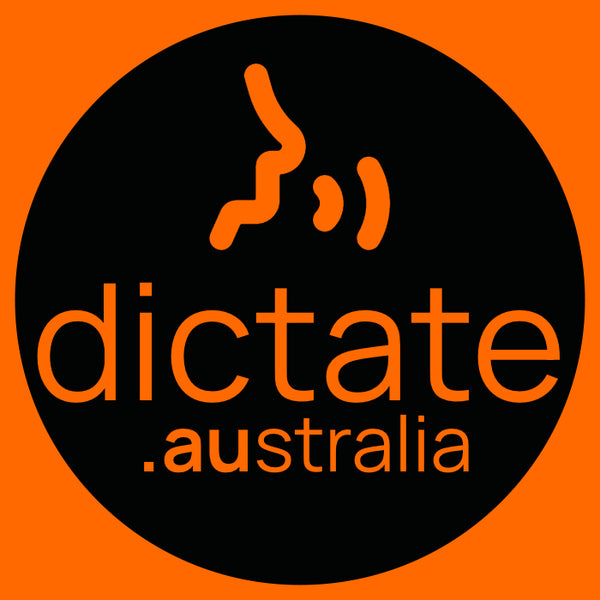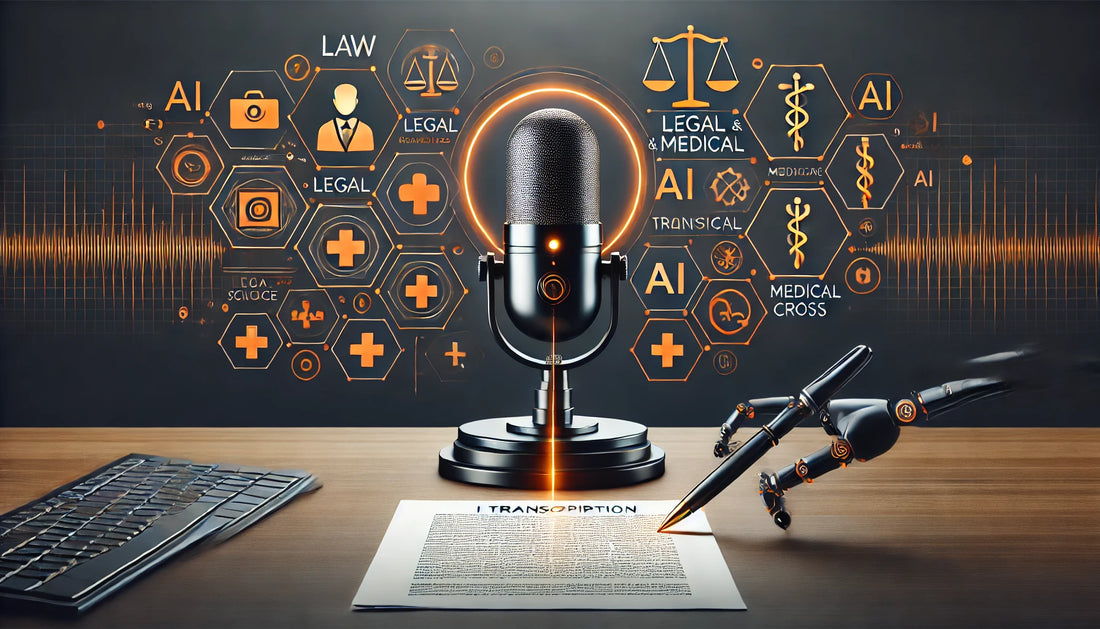How AI Transcription Can Transform Your Legal or Medical Practice
In today’s fast-paced world, legal professionals, medical practitioners, and office staff rely more than ever on accurate documentation. Whether you’re dictating case notes, recording patient information, or handling meeting minutes, the need for swift and accurate transcription is crucial. AI technology is changing the game, making the transcription process faster, more accurate, and cost-effective.
At Dictate Australia this is something we are keeping a close eye on as it is going to revolutionise the dictation and transcription space.
AI Transcription: What Is It?
AI transcription refers to the use of artificial intelligence to automatically convert spoken words into text. Whether you're speaking live, recording audio to transcribe later, or dealing with streamed audio, AI can step in and handle the heavy lifting. Unlike traditional software, which often required hours of setup and training, AI transcription works almost immediately, offering accurate results without the need for extensive manual input.
Real-World Examples of AI in Transcription
Let’s break this down with an example. Suppose you’re a lawyer who regularly dictates notes after meetings with clients. Instead of hiring someone to manually transcribe your voice notes or struggling with slow and sometimes inaccurate software, you can use an AI tool that converts your speech into text in real-time. This means, by the time your meeting is over, your notes are already typed up, ready to be reviewed.
Or consider a medical professional. Imagine speaking into a device during your patient consultation, and before the consultation ends, the patient’s record is already written up. No delays, no need to correct errors—just accurate documentation ready for the next step.
In both these examples, the use of AI not only saves time but ensures that the information captured is precise, helping reduce the risk of errors.
Why AI Is Faster and More Accurate
One of the biggest benefits of AI transcription tools is their ability to transcribe in real-time. For professionals in law and medicine, where time is money, having instant access to accurate transcripts can be a game changer. Instead of waiting hours or days for transcriptions to come through, AI can deliver high-quality results as soon as you finish speaking.
The accuracy of AI transcription is also a key selling point. Modern AI, such as the technology used by MacWhisper, which I demonstrate in one of my videos, can understand and transcribe complex terminology with impressive precision. Whether it’s legal jargon or medical terms, AI transcription is designed to recognise specific language, reducing the need for manual corrections.
Additionally, AI can handle more than just live dictation. It can transcribe pre-recorded audio or even audio streamed during a meeting or consultation. This flexibility means it can fit seamlessly into various workflows, whether you’re working in the courtroom, a hospital, or an office.
AI vs Traditional Speech Recognition
While many professionals have used traditional speech recognition tools like Dragon, there are several advantages to switching to AI-based transcription. Traditional tools often required users to spend time training the software to recognise their voice and terminology. AI, on the other hand, starts with a high level of accuracy from the get-go. It is also cloud-based, meaning it’s accessible from anywhere, without needing complex software installation or updates.
Moreover, AI transcription is often a more affordable option. Traditional systems may require significant upfront costs, while AI solutions, like those powered by OpenAI, offer flexible pricing based on usage, making it a more cost-effective option for practices of any size.
The Benefits for Legal and Medical Practices
AI transcription offers a range of benefits for legal and medical practices:
- Time-saving: No more waiting for human transcribers or struggling with inaccurate software. AI provides fast, accurate results in real-time.
- Cost-efficient: AI solutions are often cheaper than traditional speech recognition tools or hiring transcriptionists.
- Accuracy: With AI, you get high levels of accuracy, even when dealing with industry-specific terminology.
- Convenience: AI transcription can be used on the go—whether in the office, courtroom, or clinic—giving professionals more flexibility in their workflow.
The One Gotcha, Confidentiality !
All of this sounds and is amazing. Fast, cheap, accurate and easy but when it comes to the legal and medical world and in some cases the journalism world sharing patient, client or any confidential information with AI in the cloud we can't lose sight of relevant laws governing confidential audio transmitted over the internet.
This is why the .ds2 (DSS Pro) audio format was created by Olympus, Philips and Grundig to enable individual file encryption.
At Dictate Australia we pay for a OpenAI subscription which guarantees that our usage of OpenAI is not used for any global training. But realistically to use AI to transcribe audio that is confidential you would likely need to run an AI model on your own secured infrastructure using an LLM (Large Language Model) for your needs or find a solution that conforms to the many global and Australian laws and standards for confidential audio over the internet, some examples being:
International Standards for Confidential Audio:
- HIPAA (Health Insurance Portability and Accountability Act) – USA
- GDPR (General Data Protection Regulation) – European Union
- ISO/IEC 27001 – International Information Security Standard
- PIPEDA (Personal Information Protection and Electronic Documents Act) – Canada
- CCPA (California Consumer Privacy Act) – USA
- DPA (Data Protection Act) – UK (aligned with GDPR)
- SOX (Sarbanes-Oxley Act) – USA
- APPI (Act on the Protection of Personal Information) – Japan
- NIST (National Institute of Standards and Technology) – USA
- FINRA (Financial Industry Regulatory Authority) – USA
Australian Standards for Confidential Audio:
- Australian Privacy Principles (APPs) – Privacy Act 1988
- Notifiable Data Breaches (NDB) Scheme – Part of the Privacy Act 1988
- Health Records and Information Privacy Act 2002 (HRIP Act) – New South Wales
- Telecommunications (Interception and Access) Act 1979
- State-based Workplace Surveillance Laws – e.g., NSW and Victoria
- Australian Cyber Security Centre (ACSC) Information Security Manual (ISM)
- My Health Records Act 2012
Oursource Transcription companies beware, if you are using AI to speed up your accuracy and turnaround times you may be exposing your client and yourself to legal implications if you are using AI to transcribe your clients audio.
Companies who use an outsource transcription service, we highly recommend updating any terms of service to explicitly require any use of AI by the outsourcer to be declared so that you can make decisions around how you want your confidential audio managed by third parties.
Conclusion: Bringing AI Into Your Workflow
AI transcription is more than just a technological innovation; it's a practical solution for improving the efficiency of your legal or medical practice. Whether you’re looking to save time, reduce costs, or improve accuracy, AI offers a powerful tool to enhance your daily operations but you need the right solution or controls in place before just throwing your dictation and company meetings at AI.
Interested in AI solutions? Let us know, we are actively on the hunt for new secure solutions that can be incorporated into your existing dictation and transcription workflow.

